We celebrated our daughter’s half-birthday last week. (For non-math scholars, that means she is six months old).
The months truly have flown by. She is still brand new and yet at the same time, it seems like we have been our little family of five for much longer than half a year. It’s a beautiful contradiction.
 Was this really six months ago?
Was this really six months ago?
The six month mark is full of big milestones. Sitting up. Eating meals with the family. A first tooth on its way.
It’s going.by.so.quickly.
But, this post isn’t really about Molly. (Though I could look at pictures of her all day.)
It’s about how during the weeks leading up to her birth, and the months following, our grocery budget was seriously relaxed. And by relaxed, I mean like I just got my wisdom teeth out, I can’t smile or keep from drooling, and I think paint drying on the wall is funny relaxed.
For the last several months, we have been operating on a system of buying what we feel like buying, eating out when we’re desperate, and crying quietly in the corner when we total everything each month.
The freedom and grace that we gave ourselves during the newborn season was understandable. If you’re in a similar season, this isn’t meant to make you feel guilty. But we left that season a couple of months ago and have just been too lazy/busy/preoccupied to admit to ourselves that it’s time for a change.
Back to planning meals.
Back to grocery lists.
Back to saying no if there are not enough funds in the budget.
What I am doing to reign in the spending…
There are three things I am doing to help us get back on track. Our overspending has become habitual but I’m ready for the challenge and confident we can get back to a reasonable budget*.
(For us, a reasonable budget doesn’t necessarily mean getting food for as cheap as we can no matter what the food is. We are willing to budget a little more for healthier, whole foods while still trying to save money where we are able. Every family has to decide what their food goals are and what is most important and then make a budget accordingly. Also, we budget and plan groceries and meals for two weeks at a time).
1. Meal Planning
This one is pretty obvious but it is easy to get so busy that this simple practice is neglected.
Meal planning has looked different for me in various seasons of life. There have been months in which I planned every meal and scheduled it on a calendar. Very thorough and prepared.
Other times I have kept planning a little bit looser and picked meals for each week based on categories (one pasta, one to-go dinner, one meatless, one for hospitality, etc). This is a great method for balancing some structure while still keeping a lot of options available.
These days, meal planning for us just looks like listing a handful of meals and lunch ideas that we would like to have, without actually figuring out which days I will make what.
This way, I know that I can prepare by having what I need on hand, but we can more easily pick based on what we are feeling like or what our agenda requires. And of course, if there are special days, like having friends over or a fellowship meal at church, I will specifically plan for those.
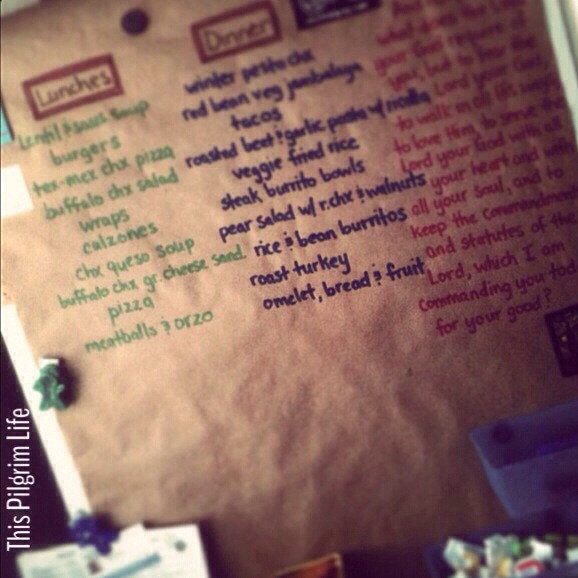
Whatever system you implement, meal planning is one of the most important steps you can take to help you stay in your grocery budget. Planning meals is the precursor for staying inspired in your cooking, eating healthy and balanced meals, and avoiding blowing the budget on last minute trips to the store for forgotten items.
Meal planning ideas:
- Quick and Easy Real Food Meals
- 20 meals you can make with a whole chicken
- A Week of Easy Meals
- Another Week of Easy Meals
- 7 Amazing Soups that Come Together Fast
2. Prepping Food
We drink a “green” (it’s often not actually green) smoothie almost every morning. It’s an important start to our day and an important way that we all get extra fruit and vegetable servings. So if I run out of what I need to make our smoothies, I’m likely going to go out and get what is lacking, whether or not it’s in the budget.
To prevent last minute trips to the store for fruit, vegetables, or whatnot, I made time at the beginning of the week to bag smoothie ingredients for each morning. Not only does this ensure that we won’t accidentally run out of something during the next two weeks, but it also streamlines our morning routine. It’s a win-win.
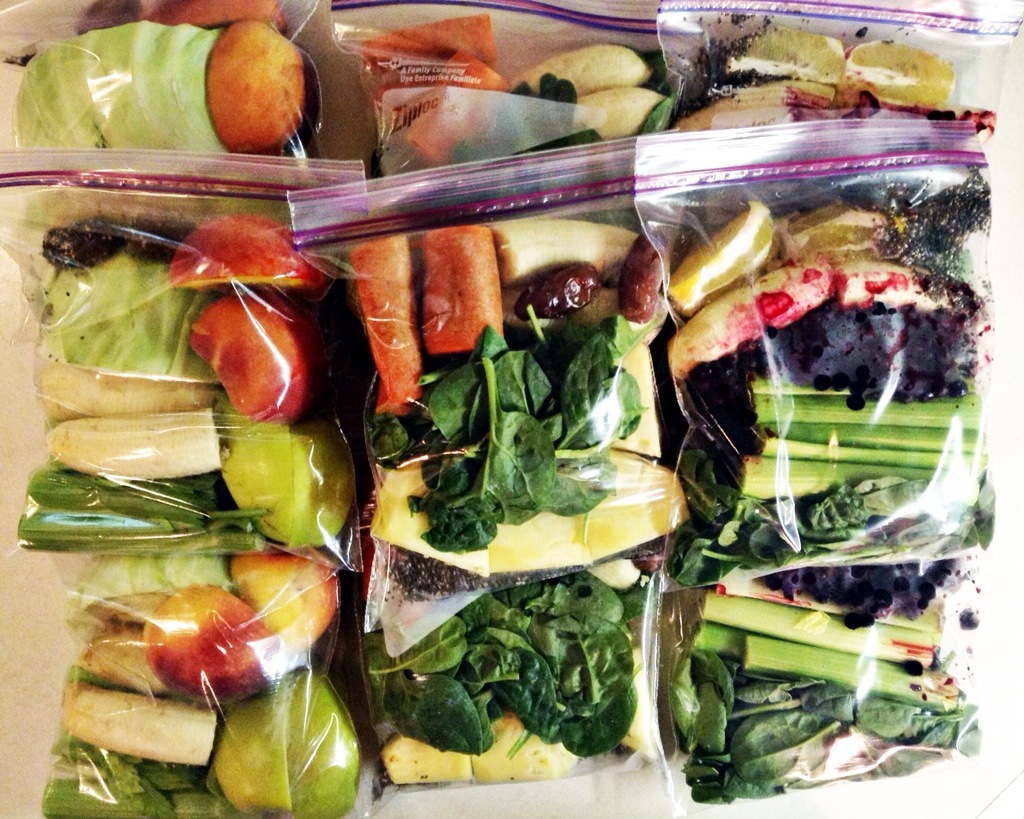 bags of smoothie ingredients ready to be frozen
bags of smoothie ingredients ready to be frozen
Some other things I will do at the beginning of the week to prepare for eating healthy meals at home is to bake sandwich bread, roast a chicken, make yogurt, prepare a batch of granola, or make some easy jam to use on yogurt, toast, or sandwiches.
Of course, I do not typically do all of this in one day, but most of these tasks are largely hands-off or can be accomplished quickly while taking care of something else.
More prepping ideas:
- Kitchen Prep Day
- How I Prep Food for the Week || Back to Her Roots
- A week of salads in a jar || Simple Bites
3. Keeping a List
We basically shop for the same things whenever we go to the grocery store. The produce and meat vary somewhat, but the staples I like to have on hand tend to stay the same. Based on this understanding of my shopping routine, I created a spreadsheet to use as a master grocery list.
The list is divided into items we need to purchase every week, items we purchase roughly every two weeks, and items we purchase about once a month. After these staple ingredients are totaled, a remaining balance is divided into an allotment for produce, meat, and other grocery needs.
I love this method because it’s more than a guide to what I need to buy at the store. It is an essential part of budgeting groceries because it organizes and totals what we need to purchase, keeping me in budget and preventing surprise totals at the store.
At the beginning of each two-week period, we visit my favorite grocery stores and get what we need. Those totals are recorded on my list. I can then make further purchases based on how much is remaining in the budget. After this initial grocery run, we should only need to go out for milk, eggs, and additional fresh produce.
A more detailed explanation and a downloadable link for a blank copy of the All-in-One Grocery Budget and List is at the end of this post.
Helpful posts to plan your budget:
- Costco & Aldi Price Comparison
- Typical Costco shopping list
- Using a Price Book || The Budget Mama
4. Farmers’ Market
I know I said three things, and this isn’t anything novel, but I have recently been reminded anew of how amazing the farmers’ market is! Meandering through row after row of beautiful fresh fruits and vegetables, delicious meats, and handmade wares, is a wonderful way to pass a morning.
Not to mention, it is a quick way to cut produce spending in half while filling your bags with local goodness. Definitely worth a special stop!
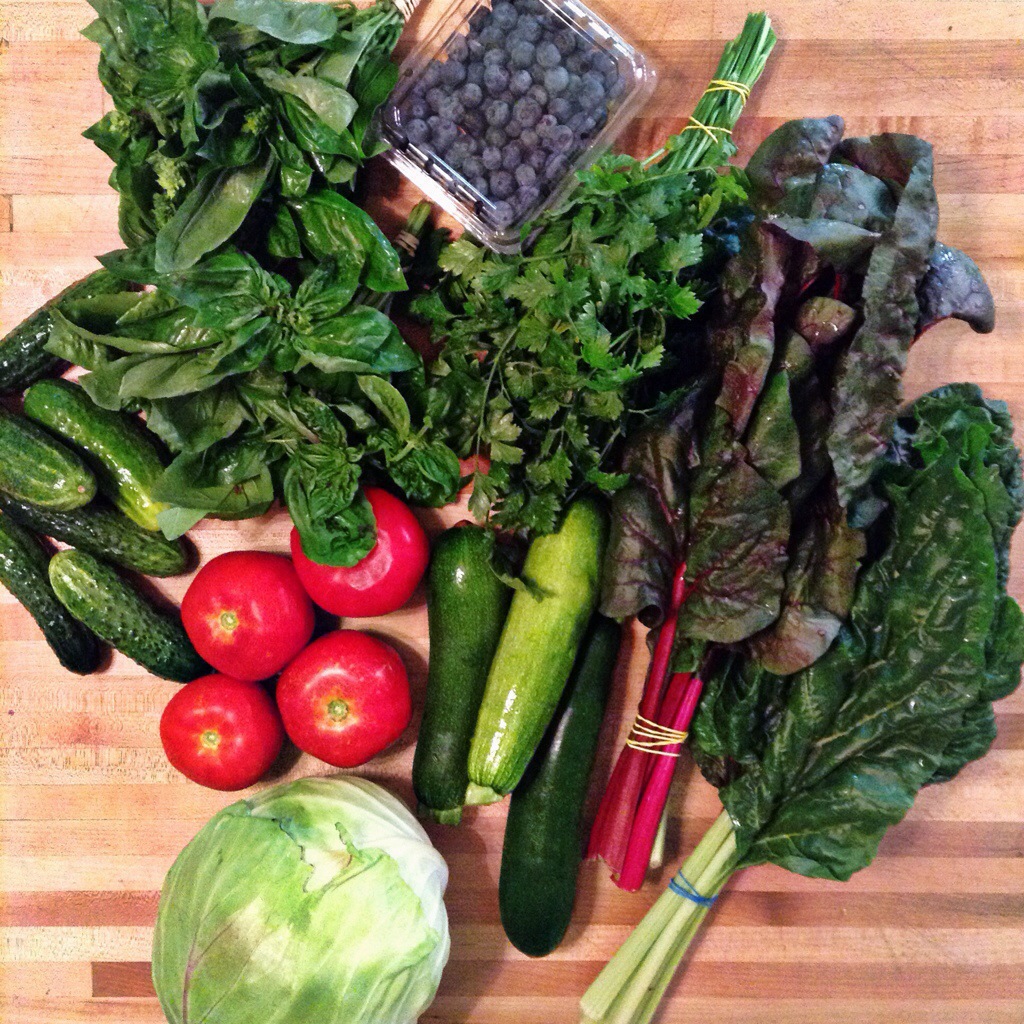 $20 for cucumbers, basil, parsley, blueberries, Swiss chard, zucchini, cabbage and tomatoes!
$20 for cucumbers, basil, parsley, blueberries, Swiss chard, zucchini, cabbage and tomatoes!
My goal is to get to a point again where we have planned well enough and where we are disciplined enough to stick to our budget.
I think I can…I think I can…I think I can…
Is anyone else in a similar cycle of overspending but trying to reign things back in?
More about the All-In-One Budget and List:
This spreadsheet was created in Microsoft Excel. One advantage to using Excel is that you can add formulas that will do all the math for you as you insert items into your list.
If Excel is new to you (or if you just need a refresher), you can find a helpful tutorial here.
The picture below explains how the spreadsheet is set up and what formulas are used. Our starting amount for groceries is $250 for 2 weeks and is reflected below. The sum of each category is totaled at the bottom of its column. These sums are worked together to determine what is remaining for additional expenses.
The top half of the spreadsheet are the staple items that do not vary much. This section stays the same week by week, saving me time since I don’t have to fill in those items each time I’m ready to plan. I fill in the bottom half of the spreadsheet based on our meal planning, what we are out of, and store sales.
Here is an example of a list from last year:
Are you in the market for a new planning and budget routine to help keep your grocery spending on track?
You can download your own blank All-in-One Grocery Budget and List and give it a try. Everything is ready to go, just click on the link and open click to open the file in Microsoft Excel. Then fill in your grocery items based on your family’s budget, eating habits, and grocery routines.
All-in-One Grocery Budget and List
Happy budgeting!

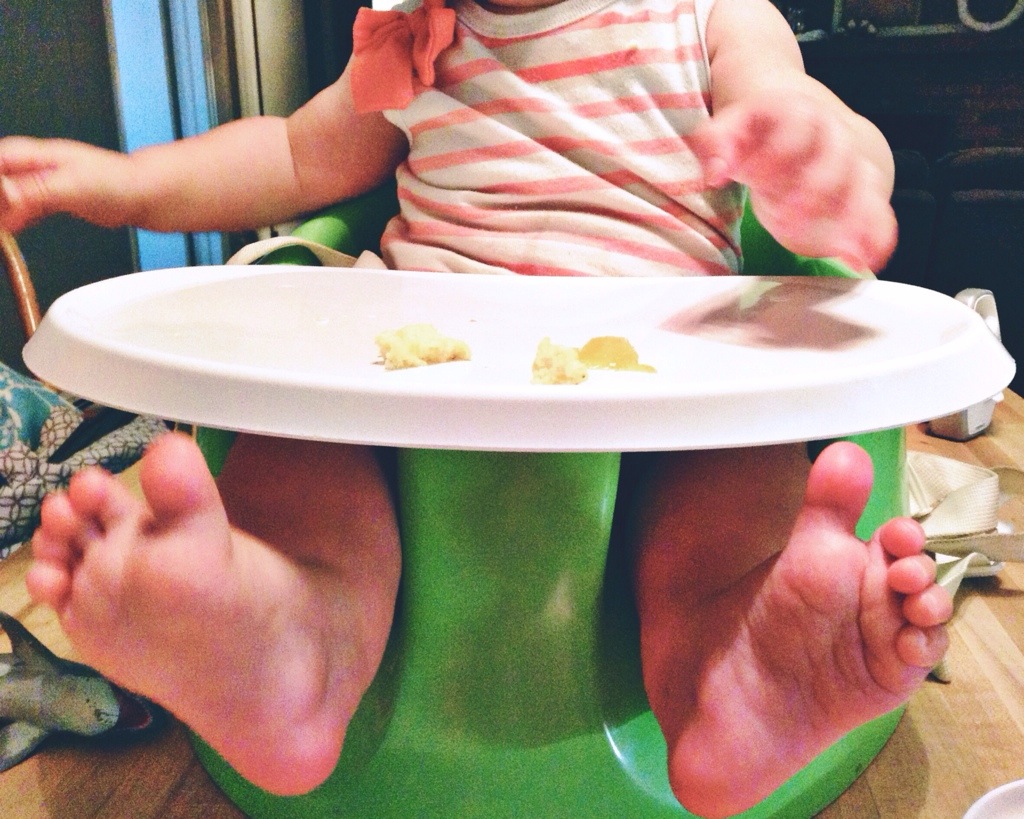
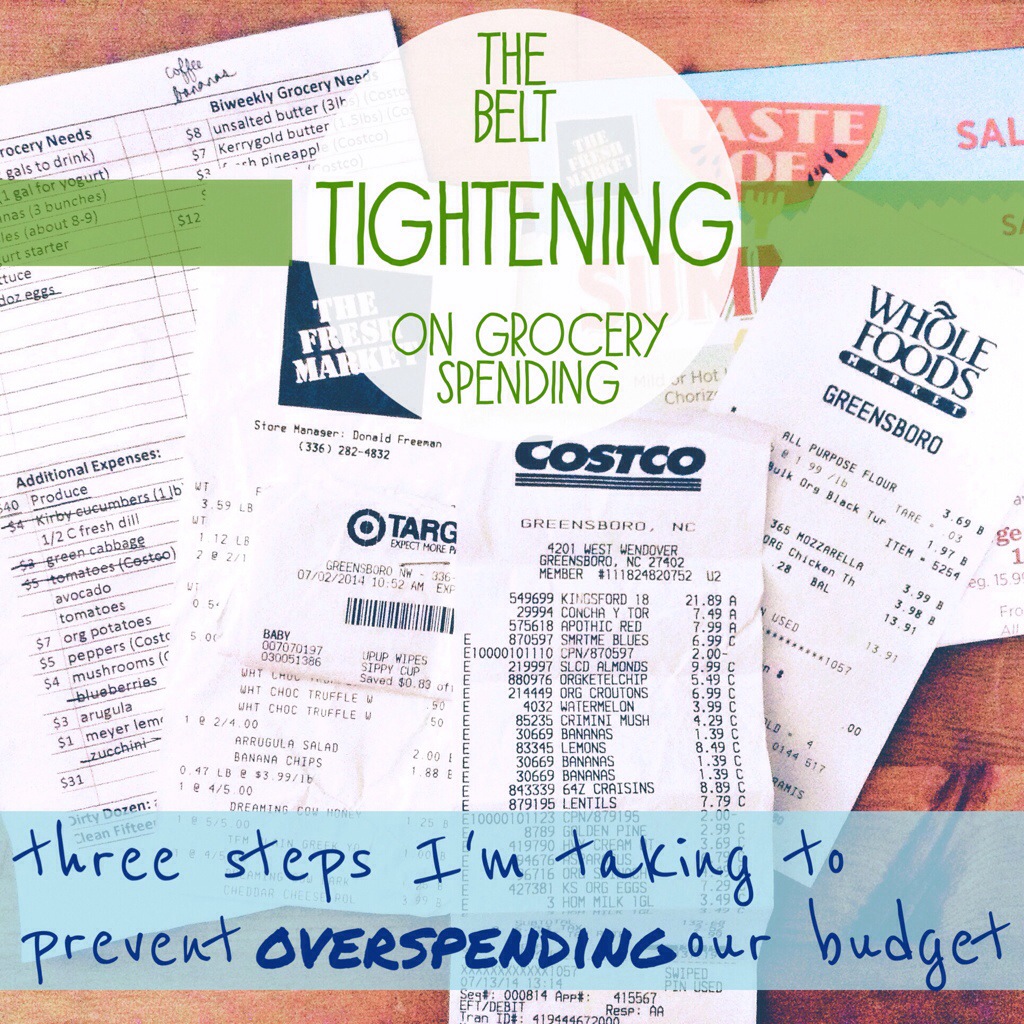
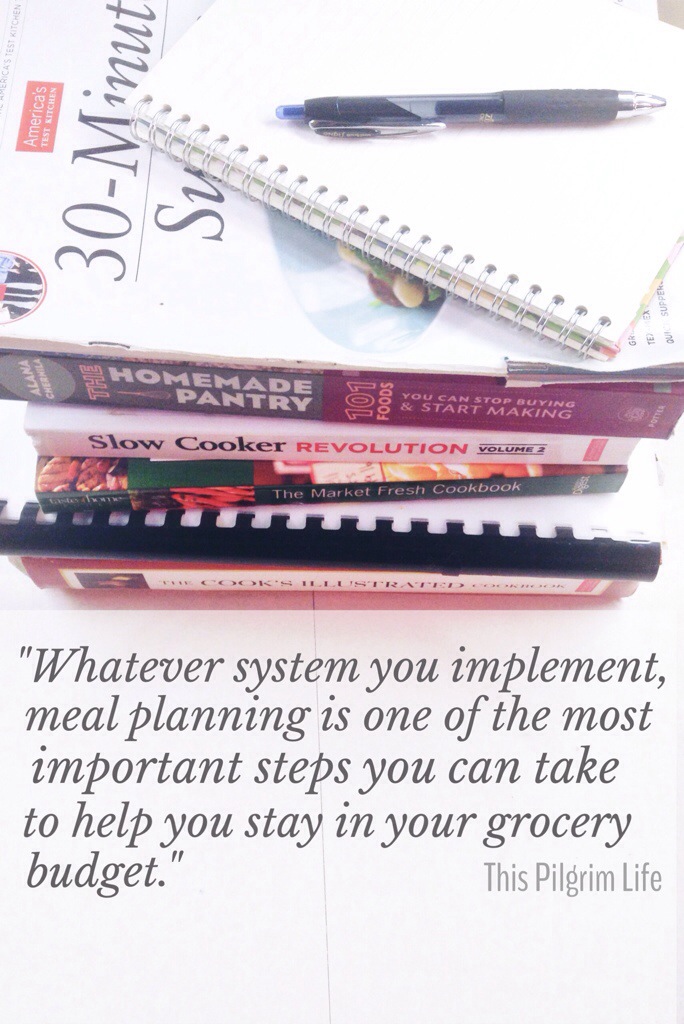
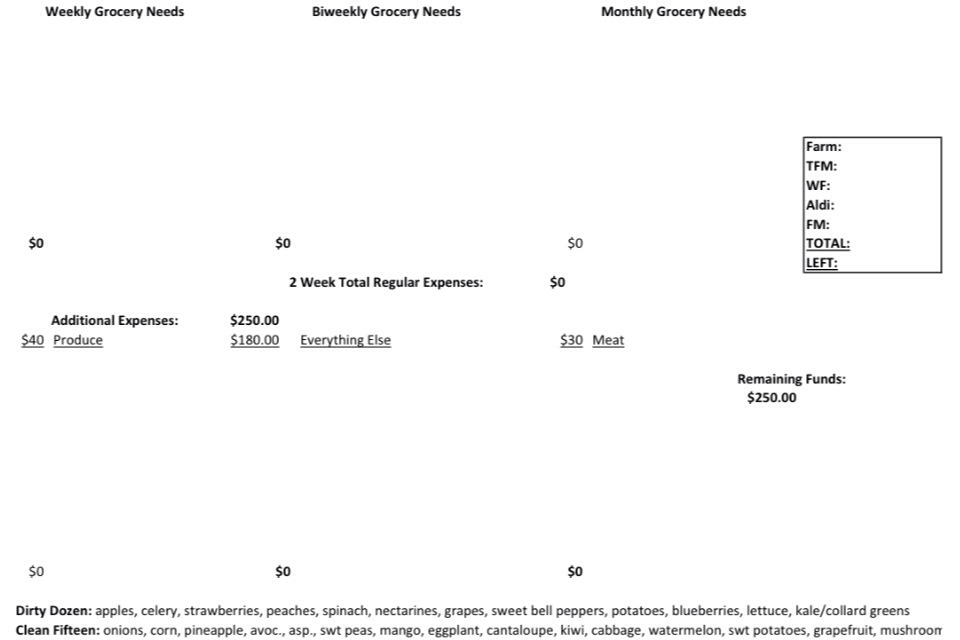

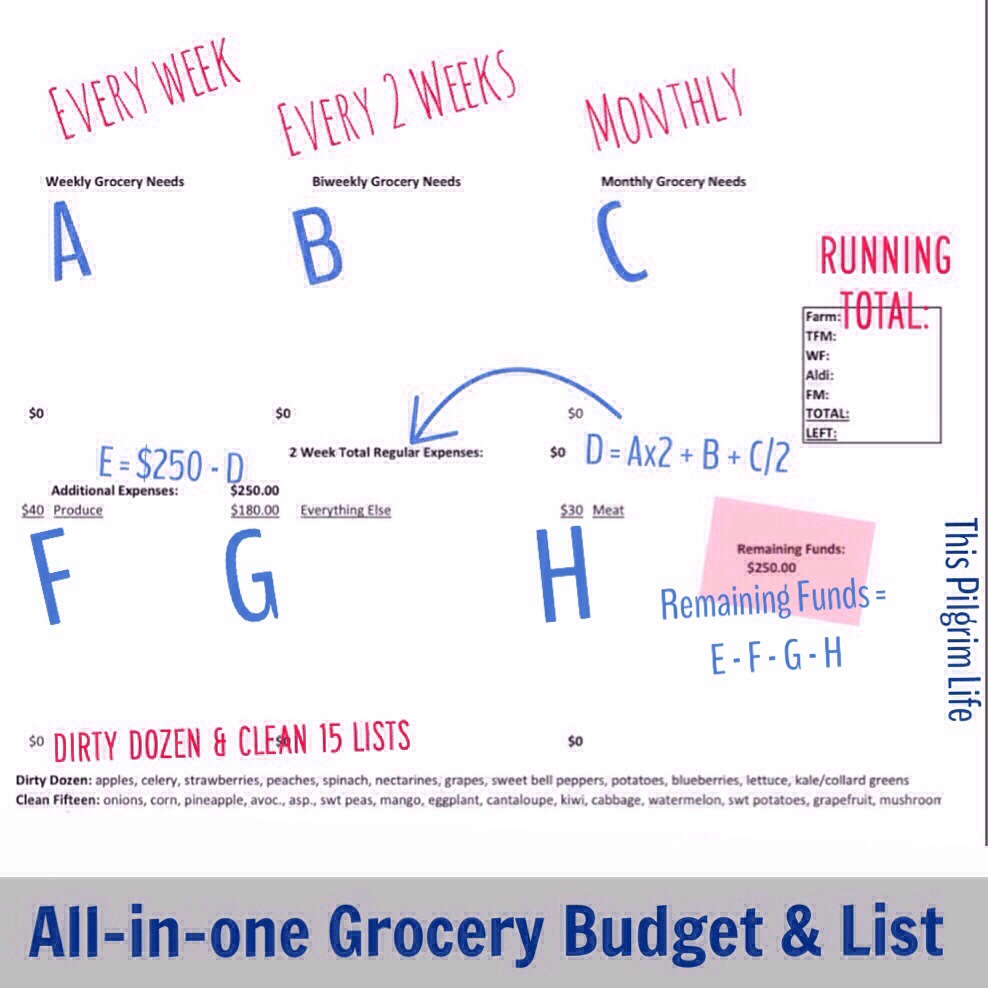
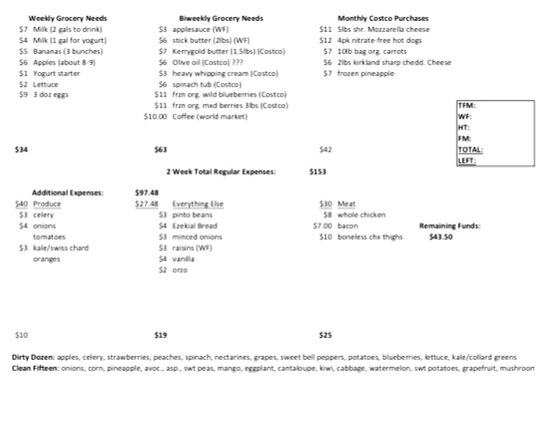
I’m late to this party, but…me!!
Between having a baby in March, being a solo parent tor all of April, vacation and moving cross-country in May…and our Whole30 in July, our grocery spending and eating out spending are at unprecedented nightmarish levels. The thought of even where to begin to bring it back under control makes me hyperventilate. It needs to happen though!!
I am new to reading your blog…have you ever shared some of your go-to smoothie recipes?
Wow! It certainly sounds like you have been busy! I definitely understand spending getting a little out of control. We were there too. Here’s hoping we can both make the changes we need to!
We don’t really use a smoothie recipe, per se. It’s more of a loose formula with lots of flexibility. I shared about it at the bottom of this post: https://www.thispilgrimlife.com/kitchen-workhorse-for-healthy-eating/
I’m glad you’ve stopped by and thanks for reading!
I love the idea of pre-bagging the smoothie ingredients. We have smoothies once in a while, but I’m not always motivated to prep all the ingredients, especially in the morning. By the way, I like the new look of your blog!
Me! Me!
We’ve been super lazy about meals, which is all too easy with just us and no real guilt about feeding a bigger family healthy and nutritious food, and are also trying to get back to cooking instead of ordering or going out.
Love your blog 🙂 So happy you are finally able to follow this dream, and oh how awesome it’s turned out! Proud of you!